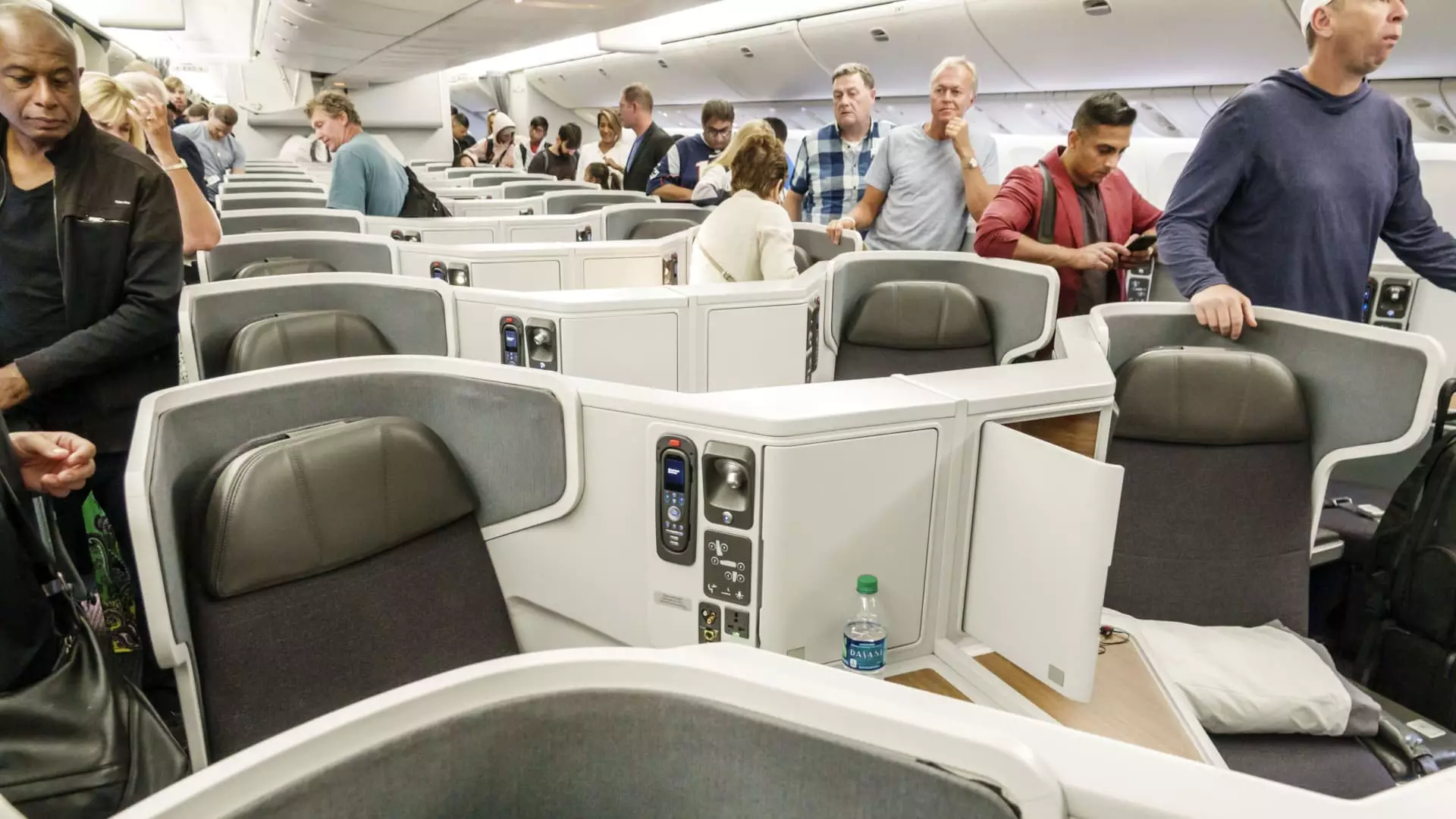The airline industry has witnessed significant shifts in passenger preferences and behaviors following the COVID-19 pandemic. Gone are the days when budget-conscious travelers were more than happy to sit in cramped economy seats. As air travel resumes normalization, airlines are observing an increasing willingness among travelers to pay a premium for more spacious accommodations at the front of the cabin. This price sensitivity intertwines with an expanding array of elite frequent flyers, making the quest for complimentary upgrades even more challenging.
Changing Passenger Expectations
The pandemic has reshaped the way travelers prioritize comfort and space. With a noticeable shift in demand, airlines are experiencing a surge in passengers opting for premium cabin experiences. Travelers are no longer just looking for the cheapest fare; they seek value through enhanced comfort. This trend has become particularly significant during peak travel seasons, such as the year-end holidays, when airlines brace for record-high occupancy rates.
The rising numbers of frequent flyers armed with elite status further complicate the seating situation, creating a highly competitive environment where coveted premium seats increasingly go to those who are willing to pay for them, rather than through the traditional upgrade routes. The reality is clear: a larger proportion of passengers now occupies these premium areas, requiring airlines to rethink their strategies to cater to a clientele that is willing to spend more on comfort.
Historically, airlines often relied heavily on subsidies from frequent flyer programs. However, as mentioned by Delta Air Lines President Glen Hauenstein, there has been a transformative shift in how airlines generate revenue. Instead of giving away premium seats, fewer than 25% of Delta’s domestic first-class seats were sold outright 15 years ago; that number has now surged to approximately 75%. This shift reflects a broader industry trend where airlines are prioritizing cash generation through higher ticket prices in premium cabin sections.
Moreover, the price disparities between economy and premium classes continue to grow. For example, the contrast in ticket prices between standard economy and lie-flat Polaris seats on United Airlines is stark, illustrating how airlines have adjusted pricing based on demand variations throughout the year. As airlines leverage these price differentials, premium class travel is rapidly becoming a lucrative revenue stream, enabling carriers to bolster their financial viability, especially in an era of fluctuating demand.
The competition among airlines to attract and retain loyal customers has intensified, leading many carriers to refine their loyalty programs. The heightened competition requires flyers to increase their spending thresholds to attain elite status. Airlines are no longer simply rewarding frequent flyers for the distance they travel; instead, revenue generation has shifted the focus towards spending patterns.
Some airlines, like United, are adjusting their elite status requirements upward, fostering a scenario where only the most devoted spenders can achieve coveted status. In contrast, American Airlines chose to maintain their existing requirements for the next earning year, potentially attracting customers who value stability amid the shifting landscape. Both approaches underscore an evolving loyalty landscape where airlines must strike a balance between enhancing customer loyalty and generating revenues.
In this competitive environment, airlines are innovating their service offerings. From introducing new business-class configurations to retrofitting existing fleets for increased premium capacity, carriers are actively responding to changing customer expectations. JetBlue Airways is redefining its product offerings by rolling out a “junior Mint,” catering to travelers who seek more than standard economy. Similarly, Alaska Airlines is expanding its premium seating options as it prepares for new international routes, correlating with the trend of increasing consumer appetite for better accommodations.
Airlines like Delta, American, and even budget carriers like Frontier are enhancing their premium cabins to cater to the burgeoning demand for comfort and space. This growing inclination toward premium cabin experiences has become a focal point for airline strategies, reflecting broader market trends where passengers are willing to pay more for a better travel experience.
As the airline industry adapts to evolving customer preferences, the balance between comfort and capacity becomes crucial. Southwest Airlines, known for its unassigned seating, is planning to replace standard coach seating with extra-legroom options, acknowledging a generational shift in expectations among consumers who prioritize a more comfortable travel experience.
However, as airlines embark on this journey towards premiumization, they must remain cognizant of operational costs and overall capacity. Investment in first-class amenities involves significant expenditure, and airlines need to exercise caution to avoid sacrificing capacity for comfort without losing sight of operational efficiency.
The shifts in airline seating dynamics are emblematic of changing consumer preferences post-pandemic. Airlines that can effectively navigate this complex landscape—balancing comfort, competition, and capacity—are likely to emerge stronger and more attuned to the desires of modern travelers. As they adapt, one thing remains clear: offering a premium experience may no longer be a luxury but a necessity in today’s highly competitive airline market.

